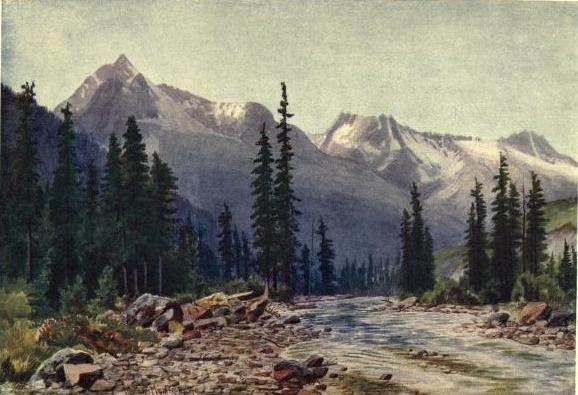
Thomas Mower Martin (1838–1934), often referred to as "The Father of Canadian Art," is a pivotal figure in the development of Canadian landscape painting. His life, spanning nearly a century, reflects the growth of Canada as a nation and the evolution of its cultural identity. Born in London, England, into a family with connections to the legal and literary circles of the time, Martin's early years were shaped by a blend of artistic exposure and practical training.
Early Life and Education
Martin was born into a family with a strong educational and cultural background. His father, Edward Horatio Martin, served as treasurer of Inner Temple, one of London's ancient legal institutions. This environment allowed the young Martin to interact with prominent figures in law, art, and literature, sparking his early interest in the arts.
Despite his early inclination toward art, Martin's initial education was geared toward a military career. He attended military school in Enfield, England, with the expectation that he would join the East India Company. However, his passion for drawing and drafting eventually led him to work for a building contractor who also happened to be responsible for hanging pictures at the Royal Academy. This serendipitous connection deepened Martin's interest in painting, leading him to attend exhibitions and study watercolors under the guidance of Humphreys at the South Kensington Schools.
Emigration to Canada and Early Struggles
In 1862, Martin made a life-changing decision to emigrate to Canada. Attracted by the promise of fertile farmland in Ontario, he purchased 107 acres in the Muskoka region. However, upon arrival, Martin discovered that his land was mostly rocky terrain and swamp, unsuitable for farming. Despite these challenges, he spent a year trying to make the best of his situation before relocating to a small farm at York Mills.
This period marked a turning point in Martin's life. With his background in drafting and formal art training, he decided to pursue painting full-time. Establishing a studio in Toronto, he began to build a reputation as a landscape painter, capturing the rugged beauty of the Canadian wilderness.
Artistic Achievements and Contributions
Martin's artistic career flourished as he became involved with the burgeoning Canadian art community. In 1872, he became a founding member of the Ontario Society of Artists, an organization that played a crucial role in promoting Canadian art. He also exhibited with the Art Association of Montreal, beginning in 1870, and became the first director of the Ontario Government Art School in 1877, where he taught oil painting to notable artists like Lucius R. O'Brien and John Colin Forbes.
Martin's work gained recognition beyond Canada's borders. In 1880, he became a founding member of the Royal Canadian Academy, further solidifying his position as a leading figure in Canadian art. His travels across Canada, often under the sponsorship of the Canadian Pacific Railway, allowed him to paint the diverse landscapes of the nation, from the Rocky Mountains to the Atlantic coast.
One of his most significant projects was the illustration of "Canada," a book published in 1907 with text by Wilfred Campbell. The book featured 77 of Martin's paintings, showcasing his mastery of color, composition, and detail in landscape and animal paintings. These works remain an invaluable visual record of Canada's natural beauty during the late 19th and early 20th centuries.

Later Life and Legacy
Even in his later years, Martin remained active in the art world. He continued to paint until just a few months before his death in 1934 at the age of 95. His longevity and dedication to his craft earned him the admiration of his peers and the public alike.
In 1922, at the age of 84, Martin completed a detailed questionnaire for Eric Brown of the National Gallery of Canada, showcasing his remarkable memory and meticulous nature. A visit to his studio in 1927 by a Toronto Telegram writer highlighted Martin's vitality and passion for art, even as he approached his 90th birthday.
Martin's legacy is preserved in numerous exhibitions and collections across Canada, including the National Gallery of Canada, the Montreal Museum of Fine Arts, and the Art Gallery of Ontario. His work is also represented in prestigious international collections, such as Windsor Castle in England.
Conclusion
Thomas Mower Martin's life and work are a testament to the resilience and creativity of an artist who helped shape the cultural landscape of Canada. His contributions to Canadian art, particularly in the realm of landscape painting, continue to be celebrated and studied, ensuring that his legacy endures for generations to come.
Browse our collection of Canadian paintings for sale at the Canadian Classic Fine Art gallery, The best place to buy a painting online. We provide free shipping anywhere in Canada and the United States. Our Montreal art gallery sells paintings online exclusively and have a 14 days return policy.
